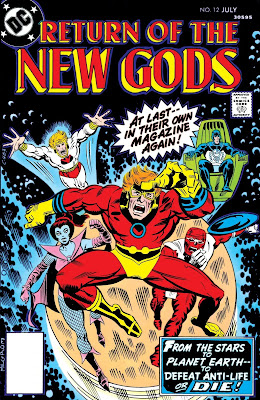‘’Thus, all those great characters who tower like giants in the history of mankind, like Buddha-Siddartha, and Jesus, in the realm of spiritual, and Alexander the Macedonian and Napoleon the Great, in the realm of physical conquests, were but reflexed images of human types which had existed ten thousand years before, in the preceding decimillennium, reproduced by the mysterious powers controlling the destinies of our world.’’ (34)
William Q. Judge elaborates on this notion in The Ocean of Theosophy, chapter 4, 1893; (he further elaborates on the subject in his first essay on the Bhagava Gita, 1895:‘’In these cycles we can include mixed characters who have had great influence on nations, such as King Arthur, Pharaoh, Moses, Charlemagne reincarnated as Napoleon Bonaparte, Clovis of France reborn as Emperor Frederic III of Germany, and Washington the first President of the United States of America where the root for the new race is being formed.’’ Without getting into the complexities of it, there is a notion of the esoteric role of prominent historical figures, who are involved in the cyclical repetition of archetypal patterns. This concept has actually received one of the more serious studies in the recent academic interest in Theosophical history with a notion that Garry W. Trompf terms 'Macrohistory: Trompf, G. (2013). Theosophical Macrohistory. In Olav Hammer, Mikael Rothstein (Eds.), Handbook of the Theosophical Current, (pp. 375-403). Leiden, The Netherlands: Brill. http://dx.doi.org/10.1163/9789004235977_019
 Jeffery Lavoie, despite mixed motives and retaining familiar tired academic misconceptions, has
undertaken a solid study of the Theosophical doctrine of cycles, benefiting from the more advanced state of scholarship since Trompf’s paper. Jeffrey D. Lavoie, “Saving Time: Time, Sources and Implications of Temporality in the Writings of H. P. Blavatsky” (PhD diss., University of Exeter, 2015). https://ore.exeter.ac.uk/repository/bitstream/handle/10871/25014/LavoieJ.pdf?sequence=3
Jeffery Lavoie, despite mixed motives and retaining familiar tired academic misconceptions, has
undertaken a solid study of the Theosophical doctrine of cycles, benefiting from the more advanced state of scholarship since Trompf’s paper. Jeffrey D. Lavoie, “Saving Time: Time, Sources and Implications of Temporality in the Writings of H. P. Blavatsky” (PhD diss., University of Exeter, 2015). https://ore.exeter.ac.uk/repository/bitstream/handle/10871/25014/LavoieJ.pdf?sequence=3
It’s a rather complex subject and as been indicated in
the first two posts, the idea has been developed variously in different
neo-Theosophical currents. The general notion of individual agency in a context
of archetypal history has been developed by several comparative mythology scholars, in
considering the relation of myth and history. Mircea Eliade elaborates how historical accounts have a
complex interaction with mythology, how poetic historical sagas and even local
legends have a tendency to become mythologized: 'A series of contemporary events is given an articulation and an interpretation that conform with the atemporal model of the heroic myth.' (Cosmos and History: , The Myth of the Eternal Return, 1958. Chapter 1, 'Myths and History')
Georges Dumézil, in "From Myth
to Fiction: The Saga of Hadingus", (1970) further elaborates on the complex inter-connection between myth, history and fiction. He considers how the early mythology of a people can be creatively
transposed into the epic of their origin or the "history" of
their kings, or the source of their fiction. The Saga of Hadingus, written by twelfth-century Danish "historian," Saxo-Grammaticus, provides an instance of this kind of transposition, demonstrating how the saga can be seen as a literary
structure derived from the religious structure of the myth. https://www.amazon.ca/Myth-Fiction-Saga-Hadingus/dp/0226169723
"From Myth
to Fiction: The Saga of Hadingus", (1970) further elaborates on the complex inter-connection between myth, history and fiction. He considers how the early mythology of a people can be creatively
transposed into the epic of their origin or the "history" of
their kings, or the source of their fiction. The Saga of Hadingus, written by twelfth-century Danish "historian," Saxo-Grammaticus, provides an instance of this kind of transposition, demonstrating how the saga can be seen as a literary
structure derived from the religious structure of the myth. https://www.amazon.ca/Myth-Fiction-Saga-Hadingus/dp/0226169723
Joseph Campbell further considers Freudian and Jungian psychological concepts: archetypal patterns found in mythology are found to appear subjectively in dreams. Therefore patterns of mythical heroes have individual applications.: 'Moreover, if we could dredge up something forgotten not only by ourselves but by our whole generation or our entire civilization, we should become indeed the boon-bringer, the culture hero of the day-a personage of not only local but world historical moment (The Hero with a Thousand Faces, 1949).
Moreover, Eliade furthermore mentions how forms of
mythical, archetypal patterns are present in modern mainstream mass media
popular culture via novels and films: 'The cinema, that 'dream factory', adopts and uses innumerable mythical motifs: the combat of the hero and the monster, combats and trials of initiation, exemplary figures and images (the 'Young Girl', the 'Hero', the land of paradise, 'Hell', etc.) Even reading has a mythological function (The Sacred and the Profane, 1957, Chapter 4, 'The sacred and the profane in the modern world',p. 174).
So with a recent article on Robin Williams, this notion of how
popular culture figures become viewed as historical figures of some
transcendent historical significance takes us full circle, as it where. Whether the archetypal structures appear
after the historical events or are coeval with them is debatable, suffice to
point out that there is a noticeable tendency in human nature to view historical
figures in an archetypal, idealized way (The celebrity worship of "Love Has Won": Why Robin Williams may have resonated with a cult. Melanie McFarland December 4, 2023 https://www.salon.com/2023/12/04/love-has-won-robin-williams-culture/ ).


















